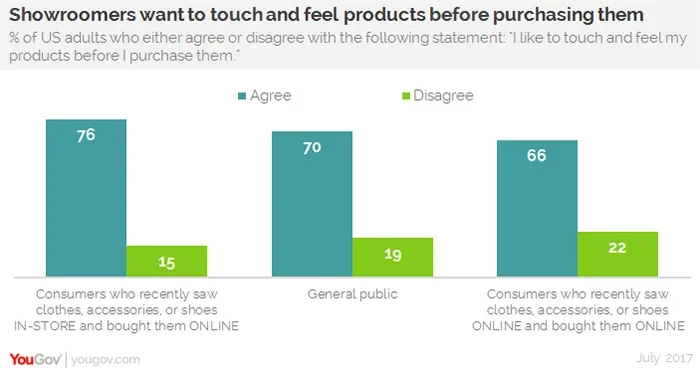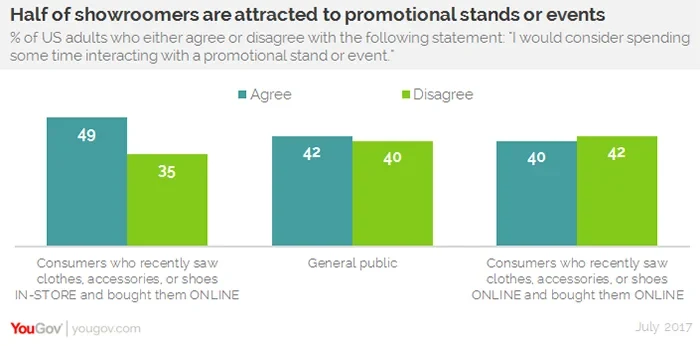76% of consumers who've recently gone online to buy clothes they first saw in a store like to touch and feel products before purchasing them
Showrooming is the practice of examining merchandise in a brick and mortar store before buying that same merchandise on the internet for a lower price. It's a problem for physical retailers trying to compete with their online rivals, which can get by with lower overhead.
YouGov data reveals that consumers who've recently seen clothing, accessories, or shoes in-store before buying them online are most likely to be female (52%), between the ages of 18 and 34 (40%), and live in either a city (37%) or a suburb (37%). This group of showroomers is also slightly more likely than the general public to say they have a strict budget when they go shopping, and that they always look for the lowest prices. Furthermore, nearly two-thirds consider themselves experts at finding bargains online.
But showrooming isn't all about saving the most money by getting the best deal.
Indeed, YouGov numbers show that consumers who've recently browsed clothing, accessories, or shoes in-store before buying them online are more likely than the general public to report a desire to touch and feel products before purchasing them (76% to 70%). Compared to online shoppers — i.e. consumers who've recently seen clothing, accessories, or shoes online and bought them online — showroomers are 10 percentage points more likely to prefer wanting to touch and feel a product before purchasing it (76% to 66%).

For brick and mortar retailers aiming to retain and potentially convert these particular showroomers into customers, there's hope. Overall, this group of showroomers seems more receptive to advertising.
For example: 56% of showroomers admit that advertising influences what they buy, compared to 44% of US adults in general. At 49%, nearly half of these showroomers report that they would consider spending some time interacting with a promotional stand or event. This is a higher percentage of agreement than that offered by both the general public (42%) and consumers who've recently both shopped and bought online (40%).










